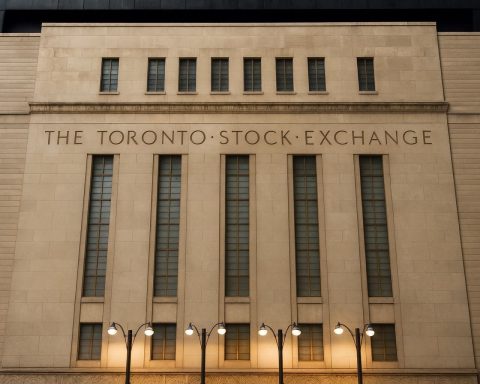LONDON — Oil prices are trading just above their lowest levels in a month on Monday, November 24, 2025, as traders balance hopes for a Ukraine‑Russia peace deal and potential sanctions relief against an already well‑supplied global market and a softer economic outlook.
By late morning in London, Brent crude — the global benchmark — was changing hands at around $62.2 per barrel, while U.S. West Texas Intermediate (WTI) hovered near $57.7 per barrel, both down a little over 0.5% on the day. [1] Prices are effectively flat compared with early Asian trading, when Brent was quoted near $62.4 and WTI around $57.9 per barrel. [2]
The moves come after crude logged its biggest weekly decline since early October, with Friday’s close leaving Brent and WTI down roughly 3% for the week and at one‑month lows. [3] Markets are now digesting a rapid shift in geopolitics, OPEC+ supply decisions and rising chatter that oil could remain relatively cheap into 2026.
Global oil prices today (24 November 2025)
Key benchmarks as of around 11:00 GMT on Monday, November 24, 2025:
- Brent crude (front‑month, ICE)
- WTI crude (front‑month, NYMEX)
- Around $57.7 per barrel, also off about 0.5–0.6% on the session. [7]
- Earlier in the day, quotes ranged between $57.9 and $58.0, but prices have drifted lower through European trading. [8]
- WTI has fallen roughly 6% over the past month and around 16% so far in 2025, reflecting a steady grind lower from peaks seen earlier in the year. [9]
- Brent–WTI spread
- Brent is trading about $4.5 per barrel above WTI, a typical premium that reflects its role as the main international seaborne benchmark. [10]
In short: oil is cheap relative to early‑2025 levels, but the market has not collapsed — instead, it’s grinding lower on persistent worries about oversupply and easing geopolitical risk.
Why oil prices are under pressure today
1. Ukraine–Russia peace talks are eroding the “war premium”
The single biggest narrative hanging over crude on November 24 is the prospect of progress in Ukraine–Russia peace talks.
- Over the weekend, negotiations in Geneva were described as “productive” by U.S. Secretary of State Marco Rubio, and Ukrainian officials also pointed to “significant progress.” [11]
- A number of outlets report that Washington and Kyiv are working on a revised peace plan ahead of a Thursday deadline set by U.S. President Donald Trump, after an earlier draft was criticized as too favorable to Moscow. [12]
For oil traders, the key question is not the politics itself, but what any deal would mean for sanctions on Russian energy exports:
- Current measures have left almost 48 million barrels of Russian crude stranded at sea, according to Reuters reporting cited by News.az. [13]
- Commentators warn that even partial sanctions relief could unlock a wave of Russian barrels into an already well‑supplied market, deepening the global glut and pushing prices lower. [14]
This is why the market reaction has been so sharp: for much of the past two years, oil carried a geopolitical risk premium linked to the war and supply disruptions. Today, traders are rapidly repricing that premium lower.
2. OPEC+ is cautious, but still adding barrels
Layered on top of the peace‑talk narrative is OPEC+ policy.
Earlier this month, the producers’ alliance — led by Saudi Arabia and Russia — agreed to:
- Raise output targets for December 2025 by 137,000 barrels per day, continuing a series of small monthly increases that began in April.
- Pause any further hikes in January, February and March 2026, citing fears of a supply glut in what is usually the weakest quarter for demand. [15]
According to Reuters, OPEC+ has already increased output targets by around 2.9 million barrels per day since April — roughly 2.7% of global supply — even as analysts warn of oversupply in 2026. [16]
The message to the market is mixed:
- On the one hand, the pause in Q1 2026 is meant to defend prices and avoid flooding the market.
- On the other, the group is still adding barrels in December, at a time when demand growth is cooling and non‑OPEC producers (notably the U.S.) are pumping aggressively.
Net result: traders see plenty of supply cushion, which makes it easier for prices to drift lower whenever demand or geopolitical risks soften.
3. The IEA and banks see a looming surplus
Fundamentals are reinforcing this bearish tone.
The International Energy Agency (IEA), in its November 2025 Oil Market Report, highlights that:
- Global oil demand grew by around 920,000 barrels per day year‑on‑year in Q3 2025, helped by China and the U.S. [17]
- For full‑year 2025 and 2026, the IEA expects demand growth of roughly 0.8 million barrels per day each year — solid, but much slower than the post‑pandemic rebound. [18]
At the same time, the agency — echoed in market commentary reported by Ukrainian outlet Mezha — warns that non‑OPEC supply growth is outpacing demand, pointing to a potential record surplus in 2026 if current trends persist. [19]
Private‑sector forecasts are leaning the same way:
- A note from Bank of America Global Research cited by Investing.com expects crude prices to stay below $60 per barrel on average in 2026, arguing that a volatile but ultimately oversupplied market will cap rallies. [20]
When traders put those pieces together — modest demand growth, strong non‑OPEC output and possible sanctions relief for Russia — it’s not hard to see why they’re reluctant to pay more than the high‑$50s for WTI or low‑$60s for Brent today.
4. Interest‑rate cut hopes vs. a strong dollar
Macro policy is also in the mix.
- According to Reuters, market participants are assigning a high probability to a U.S. interest‑rate cut next month, after relatively dovish comments from Federal Reserve officials. [21]
- Lower rates can support global growth and oil demand, but they also influence the U.S. dollar, which is crucial for dollar‑priced commodities like crude.
So far, however, the demand boost from potential rate cuts has been more than offset by supply and geopolitical factors. That’s why most of today’s oil commentary focuses on peace talks and oversupply, not on the Fed.
Regional snapshots: how today’s oil price is playing out
Gulf markets: weaker crude weighs on equities
Stock markets in the Gulf opened the week on the back foot, reflecting pressure from lower oil prices.
- A Reuters report carried by TradingView notes that major Gulf indices slipped on Monday, with Saudi Arabia’s benchmark TASI down around 0.7% and shares of oil giant Saudi Aramco also edging lower, as softer crude dented sentiment. [22]
For hydrocarbon‑dependent economies in the region, Brent in the low‑$60s is still profitable, but less comfortable than the $70–$80 range seen earlier in the year. Government budgets, capital‑spending plans and IPO pipelines are increasingly sensitive to each leg lower in prices.
India: MCX crude futures slip on weak spot demand
In India, crude oil futures on the Multi Commodity Exchange (MCX) mirrored the global tone:
- December crude contracts fell by ₹2 to ₹5,195 per barrel, as participants reduced positions amid weak spot demand, according to Rediff’s market report. [23]
- Upstox data shows that 18 December crude futures were quoted near ₹5,160 per barrel, down about 0.7%, and trading in a tight consolidation band between ₹5,200 and ₹5,400 as of Monday afternoon. [24]
Local traders are watching for a decisive breakout from that range: a sustained move below the lower boundary would align with the global bearish narrative; a bounce could signal that much of the bad news is already priced in.
Retail fuel prices: some relief, but a patchy picture
For consumers, the story is slower and more uneven.
- In the United States, AAA data cited by regional media shows the national average gasoline price at about $3.07 per gallon, essentially unchanged from last week and almost identical to year‑ago levels. [25]
- In the Philippines, major fuel retailers announced that gasoline prices will be cut by ₱0.20 per liter this week, while diesel will rise by ₱0.60 and kerosene by ₱1.30, reflecting a mix of crude moves, tax and refining margins. [26]
Lagged pass‑through, local taxes, exchange‑rate swings and refinery dynamics mean that pump prices don’t track crude tick‑for‑tick — but the broad direction is clear: as long as Brent stays closer to $60 than $80, pressure on consumers and inflation is likely to ease compared with 2022–2023 peaks.
Technical outlook: crude hovering near key support
From a trading perspective, today’s price action looks less dramatic than last week’s slide — but it may be important.
- Analysts at FXEmpire note that WTI has fallen to a one‑month low, with sellers firmly in control as the market tests the lower edge of its recent trading range. [27]
- On India’s MCX, Upstox describes crude futures as “compressing within narrow ranges,” with traders waiting for a directional breakout to define the next trend. [28]
Put simply, crude is sitting on support:
- If peace talks accelerate and OPEC+ sticks to its December hike while pausing only briefly in 2026, the market could easily break lower, opening the door to WTI in the low‑$50s and Brent in the high‑$50s.
- Conversely, any setback in negotiations, unexpected supply disruption or upside surprise in demand data could trigger a short‑covering rally, pushing prices back toward the mid‑$60s for Brent.
For now, though, sideways‑to‑lower remains the dominant short‑term narrative.
What to watch next
Looking beyond today’s tape, a few catalysts will likely determine whether oil stabilizes or continues its slide:
- Outcome of Ukraine–Russia peace efforts
Any concrete framework — or, conversely, a breakdown in talks — could dramatically change expectations about Russian export flows and sanctions. - Upcoming OPEC+ meetings
Markets will scrutinize whether the alliance sticks to its plan to pause production hikes in Q1 2026, or adjusts course if prices fall too far too fast. [29] - IEA, EIA and central bank updates
Fresh data on global demand, inventories and non‑OPEC supply, plus new guidance from the Federal Reserve and other major central banks, will feed directly into oil demand and dollar expectations. [30] - Bank and analyst forecasts
With institutions like Bank of America now openly talking about crude averaging below $60 in 2026, any revision to those calls could move sentiment quickly. [31]
Bottom line
On November 24, 2025, the global oil market sits at a delicate crossroads:
- Prices: Brent around $62 and WTI just under $58, both near one‑month lows and well below early‑year highs. [32]
- Drivers: Hope for a Ukraine–Russia peace deal, expectations of easier sanctions on Russian crude, a cautiously dovish OPEC+, and forecasts of a potential supply surplus in 2026. [33]
- Impact: Softer crude is already weighing on Gulf equities, reshaping Indian futures markets, and slowly filtering through to pump prices in major consuming countries. [34]
For households and businesses, weaker oil is good news for costs and inflation. For producers and oil‑exporting governments, it underscores the challenge of managing budgets and investment in a world where $60 oil may be the new normal.
This article is for informational purposes only and should not be taken as financial or investment advice. Oil markets are volatile, and prices can change rapidly as new data and headlines emerge.
References
1. markets.ft.com, 2. stockinvest.us, 3. commoplast.com, 4. markets.ft.com, 5. commoplast.com, 6. tradingeconomics.com, 7. markets.ft.com, 8. stockinvest.us, 9. tradingeconomics.com, 10. markets.ft.com, 11. www.bloomberg.com, 12. news.az, 13. news.az, 14. commoplast.com, 15. www.reuters.com, 16. www.reuters.com, 17. www.iea.org, 18. www.iea.org, 19. mezha.net, 20. m.investing.com, 21. news.az, 22. www.tradingview.com, 23. money.rediff.com, 24. upstox.com, 25. allwny.com, 26. www.gmanetwork.com, 27. www.fxempire.com, 28. upstox.com, 29. www.reuters.com, 30. www.iea.org, 31. m.investing.com, 32. markets.ft.com, 33. www.bloomberg.com, 34. www.tradingview.com









